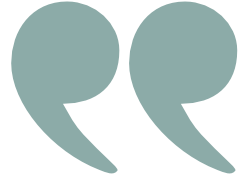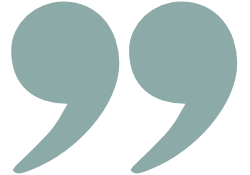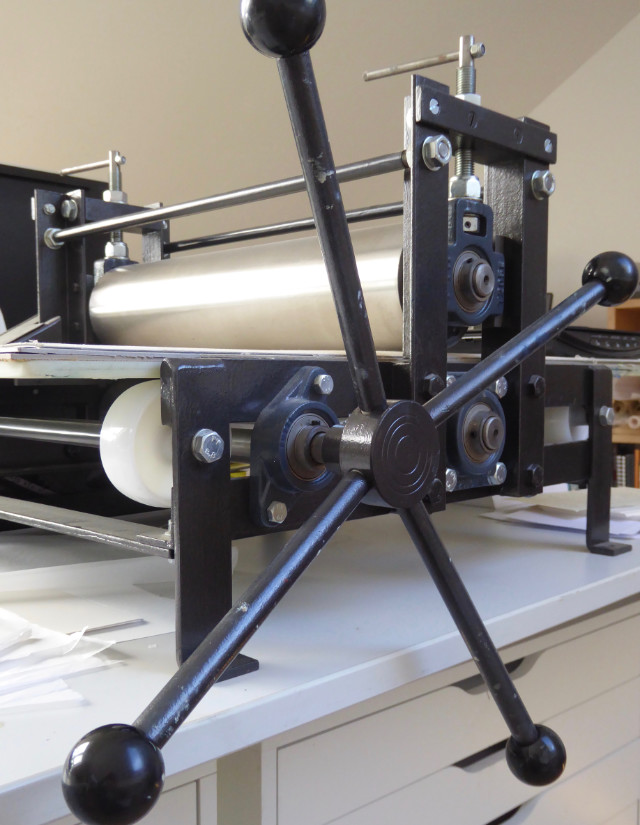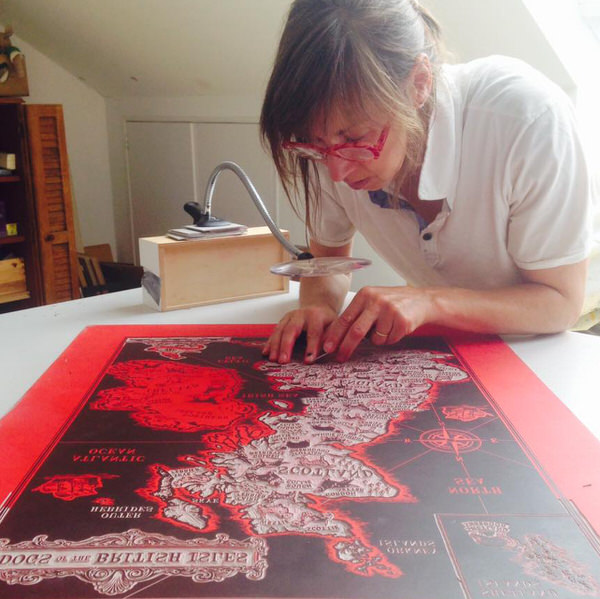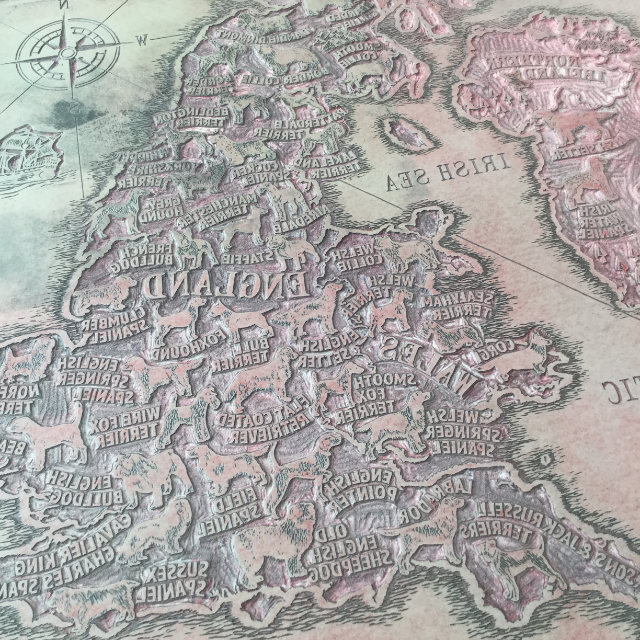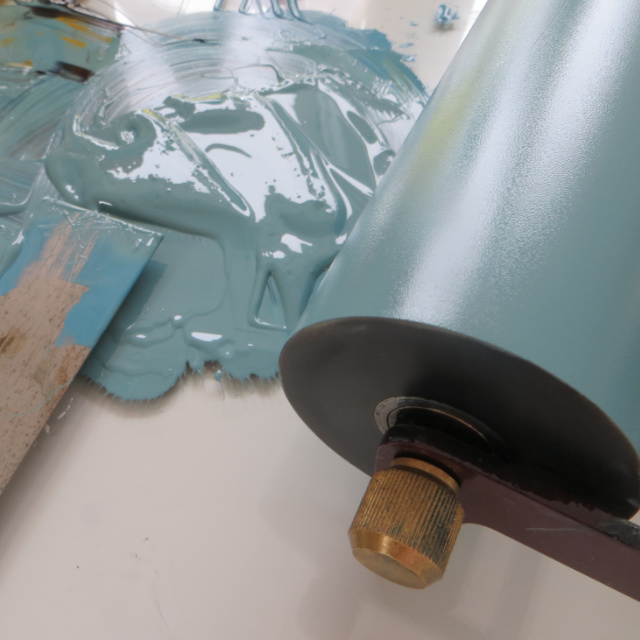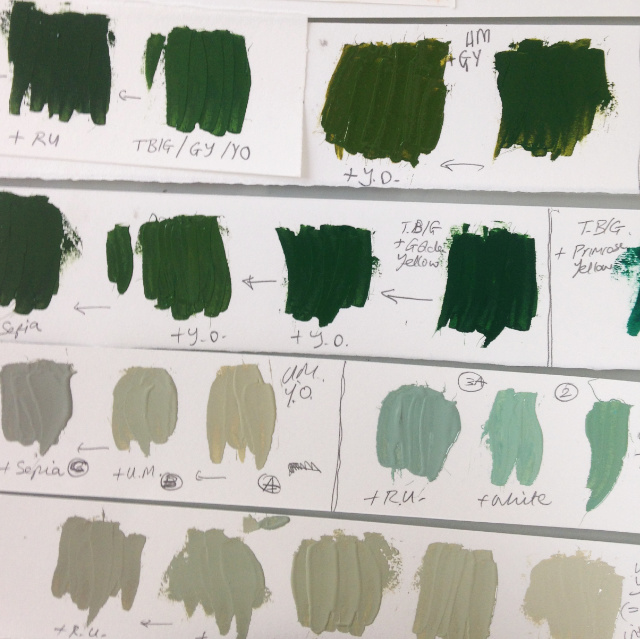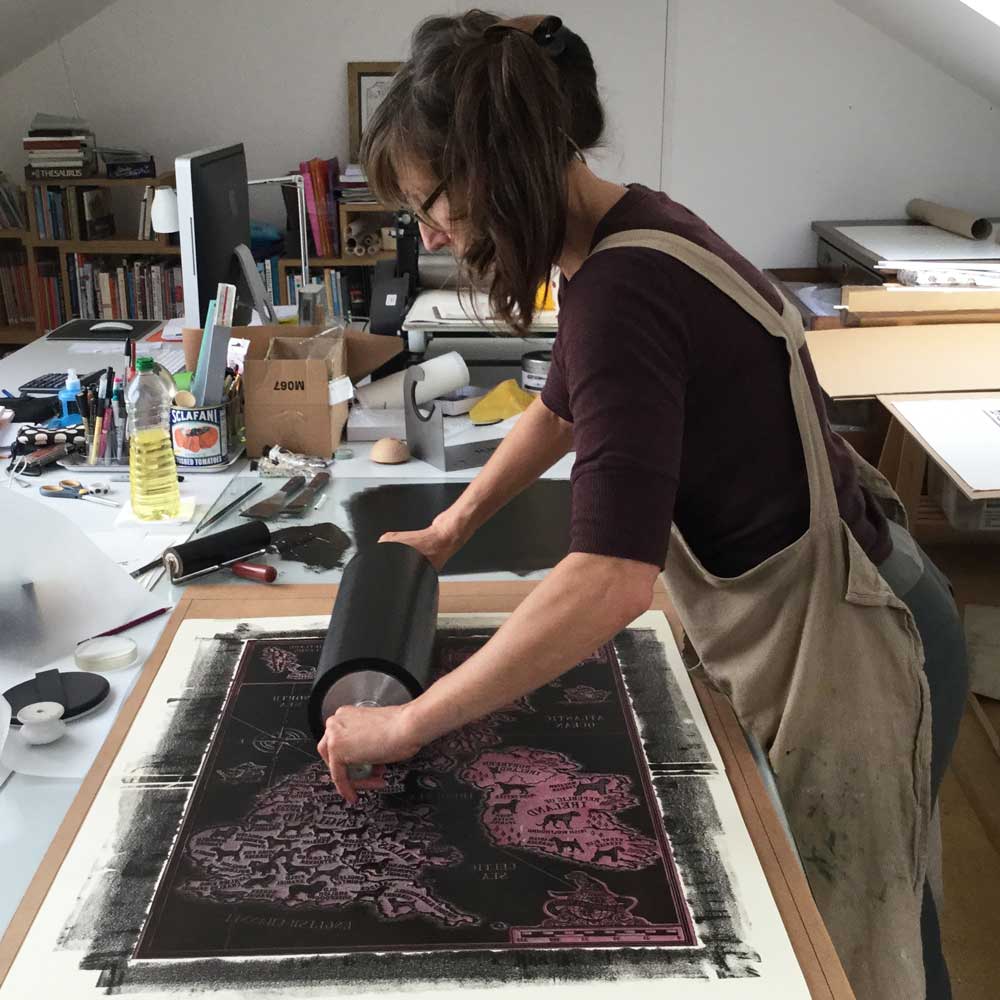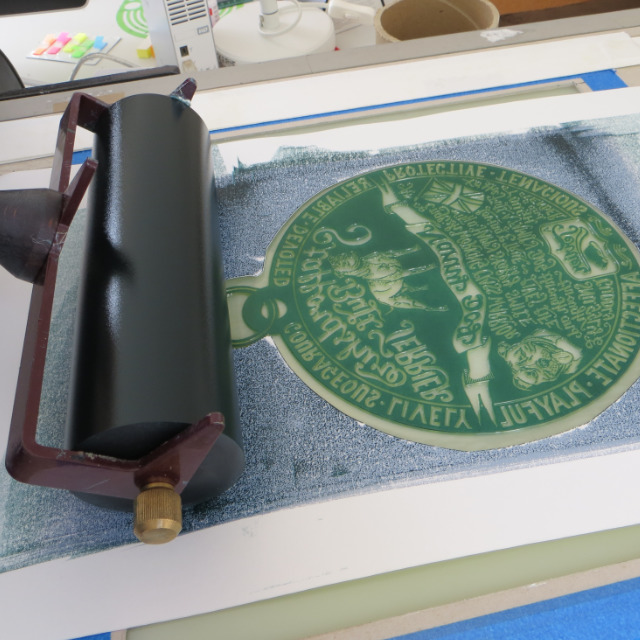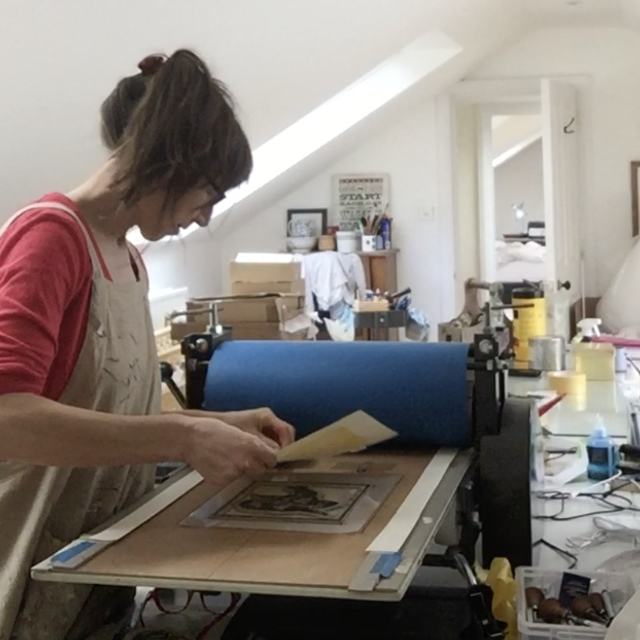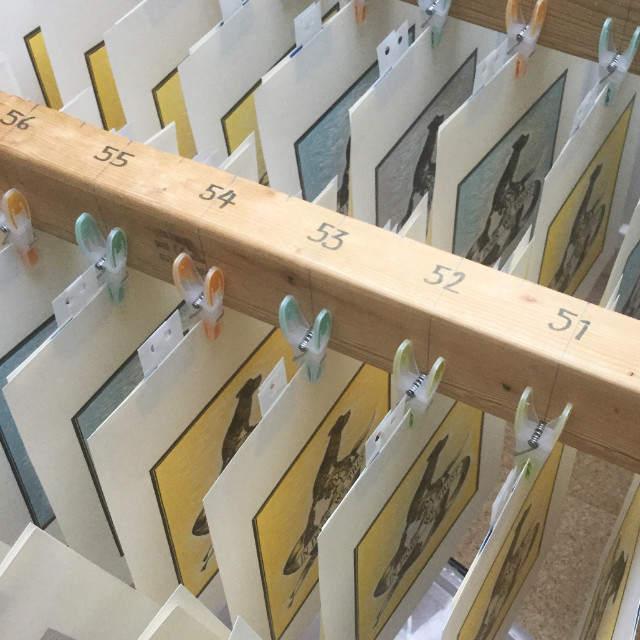Developing an idea
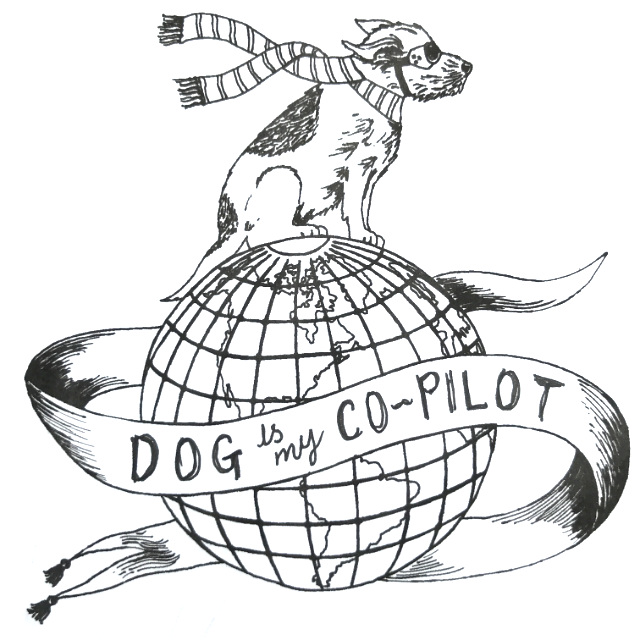
New prints usually start life as thumbnail sketches, doodles and lettering ideas. I might work traditionally (with a pencil in a sketchbook) or digitally, or often a combination of the two.
Transferring the design onto lino
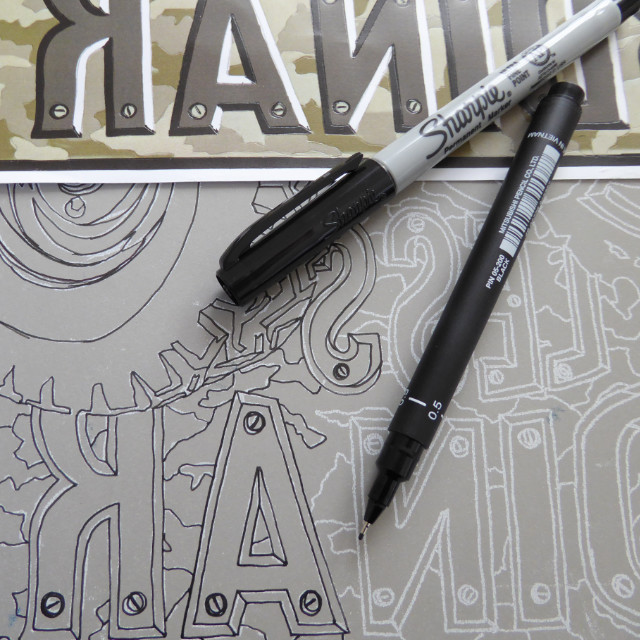
Once the visual layout is confirmed I have to consider the technical printmaking implications of achieving the final print. Printmaking requires you to think in layers, as each different colour to be printed usually needs a separate plate. For a lino-print, I transfer the relevant parts of my design onto a piece of linoleum.


